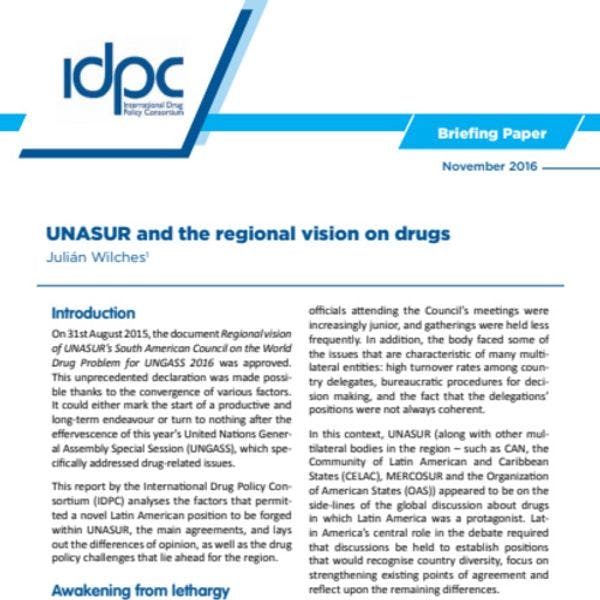UNASUR and the regional vision on drugs
UNASUR’s South American Council on the World Drug Problem (CSPMD in Spanish) was created in 2010 and achieved some progress in approving its statutes and devising a plan of action. It initially carried out periodic activities and was active in certain debates, in particular those related to the issues tackled by its working groups. These discussions did not differ much from those taking place within bodies such as the Inter-American Drug Abuse Control Commission (CICAD) or the Andean Community of Nations (CAN).
In the years that followed, the CSPMD lost its dynamism – debates became less substantive, officials attending the Council’s meetings were increasingly junior, and gatherings were held less frequently. In addition, the body faced some of the issues that are characteristic of many multilateral entities: high turnover rates among country delegates, bureaucratic procedures for decision making, and the fact that the delegations’ positions were not always coherent.
In this context, UNASUR (along with other multilateral bodies in the region – such as CAN, the Community of Latin American and Caribbean States (CELAC), MERCOSUR and the Organization of American States (OAS)) appeared to be on the side-lines of the global discussion about drugs in which Latin America was a protagonist. Latin America’s central role in the debate required that discussions be held to establish positions that would recognise country diversity, focus on strengthening existing points of agreement and reflect upon the remaining differences.
Keep up-to-date with drug policy developments by subscribing to the IDPC Monthly Alert.
Downloads
Topics
Regions
Related Profiles
- International Drug Policy Consortium (IDPC)
